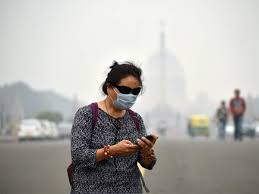NEW DELHI : A near-halt in normal life and economic activity, aimed at slowing down COVID-19 spread, yielded clear blue skies in Delhi, one of the most-polluted cities across the world.
However, the gains from the COVID-19 lockdown did not last long as economic activity sputtered back to life, and air pollution returned to the city’s usual high levels, making the pandemic worse.
During the lockdown period without any major relaxations — between March 25 and May 18 — pollution levels in Delhi reduced drastically and the air quality index (AQI) remained in the “satisfactory” category for most of the time.
“In Delhi-NCR, one of the major factors that led to the drop in pollution was a 97 per cent reduction in overall traffic and 91 per cent reduction in trucks and commercial vehicles entering the capital during April, as compared to the pre-lockdown months of December-January,” the Centre for Science and Environment said in a report.
From May 18 to June 5, the AQI remained in the ‘moderate’ category. From July to September, monsoon rains kept pollution levels in check.
At an average AQI of 63.8, August was the cleanest month of the year in terms of air quality. There were four “good” air days in August, the highest in any month since 2015, when the CPCB began monitoring AQI.
By October end, the air turned “severe” again, raising concerns among health experts about its impact on the coronavirus patients.
It prompted the Delhi government to launch a massive anti-air pollution campaign – “Yuddh Pradushan Ke Viruddh” – under the leadership of Chief Minister Arvind Kejriwal and Environment Minister Gopal Rai.
In an effort to curb air pollution levels in the city, Kejriwal banned firecrackers in the national capital ahead of Diwali, and promised to ramp-up critical health infrastructure in state-run hospitals, citing links between rising air pollution and a surge in coronavirus cases in Delhi.
The Indian Medical Association said in November that “13 percent of the recent COVID-19 cases may be linked to air pollution.”
As pollutions levels breached the emergency threshold twice in the month, a grey apocalyptic smog enveloped Delhi for days, blotting out the sun from the sky and smudging landmarks from view.
According to the CPCB, the city recorded 10 “severe” air days this November, the maximum number in the month in four years, largely due to lesser precipitation and large-scale stubble burning.
Pollution levels on Diwali this year and the day after were the maximum in the last four years despite a ban on firecrackers.
Kuldeep Srivastava, the head of the regional forecasting centre of the India Meteorological Department said, the air was fouler this November as there was lesser precipitation as compared to last year.
The other major reason was large-scale stubble burning, he said.
Farmers started burning crop residue early due to early harvesting this year. Also, the farm fires raged for a longer duration.
Punjab alone recorded 76,590 cases of stubble burning this season, the highest in the last four years. The number was 55,210 last year.
An official from Indian Agricultural Research Institute (IARI) said the incidents of stubble burning hit the peak between November 4 and November 7.
According to the Ministry of Earth Sciences’ air quality monitor, SAFAR, the share of stubble burning in Delhi-NCR’s pollution peaked to 42 per cent on November 5, when 4,135 farm fires were recorded in the region.
“It was a bumper harvest this year, so the amount of crop residue was also large. Also, it was a cloud-free season this year as compared to last year. The biomass was drier and prone to burning,” the IARI official said.
While the region was grappling with “severe” air quality, the Centre dissolved the Environment Pollution (Prevention and Control) Authority and set a new commission for management of air quality in Delhi-NCR.
It also expedited work on a smog tower coming up in Anand Vihar following directions from the Supreme Court. It is expected to be completed by June next year.
On the other hand, the Delhi government launched PUSA bio-decomposer, developed by scientists at Indian Agricultural Research Institute here, claiming it can decompose crop residue within 20 days and prevent stubble burning.
It is yet to be seen whether these steps yield any results in 2021. (AGENCIES)
Trending Now
E-Paper


